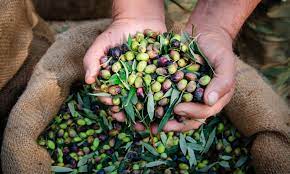
Italy's culinary prowess is as celebrated as its cultural and historical treasures. From the snow-capped peaks of the north to the sun-drenched shores of the south, Italy's diverse flavors have captivated the world. This overview of Italian cuisine is a voyage through beloved recipes, cherished ingredients, and the undeniable passion Italians have for their food.
Italian Cuisine: Simplicity Elevated
At its heart, Italian cuisine is all about simplicity. It's about using fresh, high-quality ingredients to create dishes that are greater than the sum of their parts. Italian food philosophy revolves around a deep respect for ingredients, where natural flavors shine without excessive seasonings or techniques.
Pasta and Pizza: Icons of Italian Gastronomy
Pasta and pizza are not just dishes; they are experiences. Pasta's allure lies in its versatility. It can be as simple as Aglio e Olio (garlic and oil) or as complex as the layered Lasagna. Each region boasts its distinctive pasta dish, from Rome's bustling streets with its Cacio e Pepe to Bologna's serene hills with its Tagliatelle al Ragu.
Pizza, on the other hand, is a canvas of Mediterranean flavors. Whether it's the classic Margherita with tomatoes, mozzarella, and basil or the pizza al prosciutto adorned with the finest ham, each slice tells a story of history and passion.
Mediterranean Flavors: Italy's Heartbeat
Italian cuisine's Mediterranean flavors are a symphony of land and sea. Olive oil, fresh seafood, sun-ripened tomatoes, aromatic herbs, and luscious wines define this cuisine. These flavors not only tantalize the palate but also speak of a timeless relationship between Italians and their environment.
The Italian trinity of tomatoes, basil, and mozzarella embodies the freshness and vibrancy of Italian food. Whether in a Caprese salad or a simple bruschetta, this combination is a celebration of the Mediterranean.
Renaissance of Italian Desserts
Italian desserts are a celebration of sweetness and creativity:
Tiramisu: Layers of coffee-soaked ladyfingers, silky mascarpone cheese, and cocoa create a sensory delight.
Cannoli: These tiny pastry tubes filled with delicious ricotta cheese showcase the skill of Italian bakers.
Panna Cotta: A delicate custard of cream, sweetness, and agar, offering a canvas for creative garnishes.
Italian Bread: An Art Form
Bread in Italy is an art:
Ciabatta: Known for its crisp crust and soft, airy interior.
Focaccia: Olive oil-rich and flavored with herbs, sometimes adorned with olives or tomatoes.
Taralli: Ring-shaped snack bread, often seasoned with fennel or black pepper.
Cheese: Italy's Dairy Delight
Italian cheeses are a world of their own:
Parmigiano Reggiano: A hard, aged cheese perfect for grating over pasta and pizza.
Gorgonzola: Italy's blue cheese variant, known for its sharp and creamy profile.
Ricotta: A soft cheese used in pasta fillings and desserts, adding a creamy touch.
Italian Culinary Traditions and Festivals
Italian festivals often revolve around food:
La Tomatina: An Italian version where tomatoes turn into playful weapons!
Sagra del Carciofo: Celebrating the artichoke in Ladispoli, near Rome.
ChocoBarocco: A chocolate festival in Modica, Sicily, honoring its unique grainy chocolate.
Innovation in Italian Cuisine
Italian food has a rich history but is also open to innovation:
Local and Seasonal: Contemporary chefs support sustainability by sourcing ingredients locally, reducing their carbon footprint.
Vegan and Gluten-Free: Modern versions of classic dishes cater to diverse dietary needs without compromising flavor.
Culinary Fusion: Italy embraces flavors from around the world, infusing them into native cuisine for a unique culinary experience.
Regional Wonders: From North to South
The North: Known for butter, rice, and rich flavors, with risottos like Arborio or Carnaroli.
Central Italy: Simple ingredients prepared to bring out natural flavors, with dishes like Ribollita, a rustic vegetable and bread soup.
The South: Abundant seafood and Mediterranean flavors, with dishes like Spaghetti alle Vongole, marrying clams with garlic, olive oil, and white wine.
The Heart of Italian Cooking: Olive Oil
Olive oil is not just a cooking medium; it embodies the essence of Italian flavors. Whether drizzled over pasta, used for frying, or as a dip for bread, this golden elixir enriches every dish. With diverse regional varieties, olive oil remains the heart and soul of Italian gastronomy, revered for its health benefits and rich flavors.
Conclusion: A Celebration of Life and Flavors

Exploring Italian cuisine is not just about food; it's a journey through history, culture, and passion. From the universally beloved pasta and pizza to the diverse regional specialties, Italian cuisine is a celebration of life's simple joys. Whether you're savoring a risotto in Lombardy or indulging in a cannoli in Sicily, each bite tells a story of tradition and love. So, as you embark on your Italian culinary adventure, remember to savor the flavors, embrace the culture, and enjoy the timeless beauty of Italian food. Buon Appetito!






